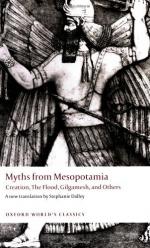
|
Preface 1, Preface 2, List of Figures, Sigla and Abbreviations, Introduction, Chronological Chart, and Map of the Near East
1. How many myths are contained in this book?
(a) Ten.
(b) Twenty.
(c) Twelve.
(d) Five.
2. From which civilization do these myths originate?
(a) Greece.
(b) Mesopotamia.
(c) China.
(d) Rome.
3. What unique feature does this book use to help the reader understand these stories?
(a) It is fully annotated so that further research is accessible.
(b) It relates these stories to other, well-known tales.
(c) It offers several original pictures from the time period.
(d) It offers a version of the stories in their original language.
4. In what tradition where these myths originally related?
(a) Dance.
(b) Oral tradition.
(c) Murals within the temples.
(d) Song.
5. What tool, in this book, explains how these myths came about?
(a) The Abbreviations.
(b) The Sigla.
(c) The Prefaces.
(d) The Figures.
6. What section of the book is the table of contents for the book's figures?
(a) The List of Figures.
(b) The Sigla.
(c) The Abbreviations.
(d) The Prefaces.
7. How many figures are contained within this book?
(a) Two.
(b) Five.
(c) Three.
(d) Four.
(read all 180 Multiple Choice Questions and Answers)
|
This section contains 5,084 words (approx. 17 pages at 300 words per page) |

|




